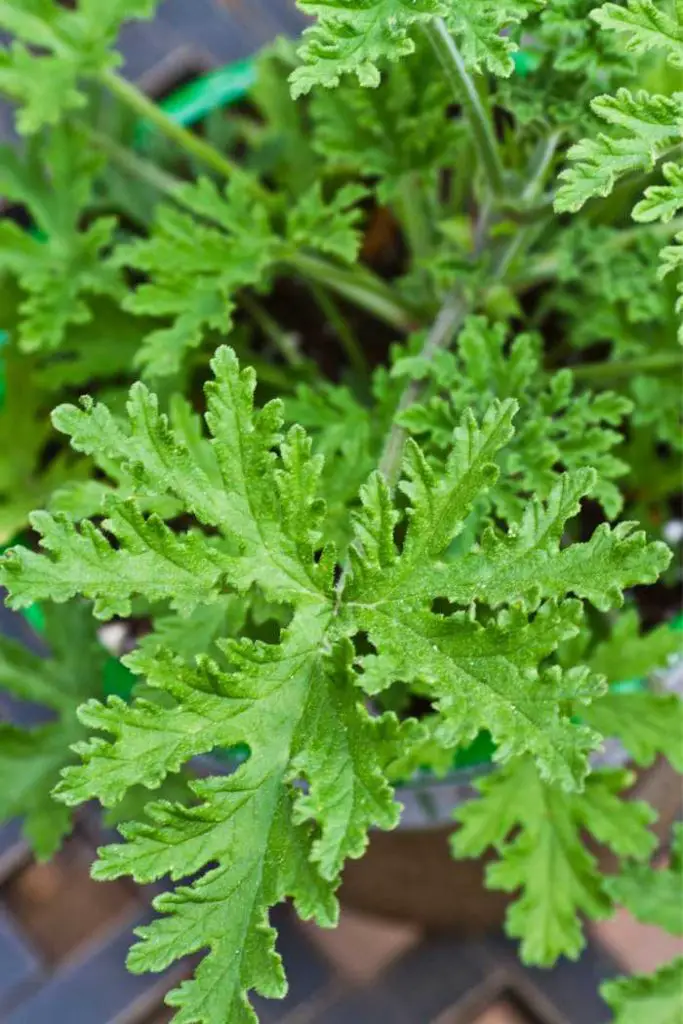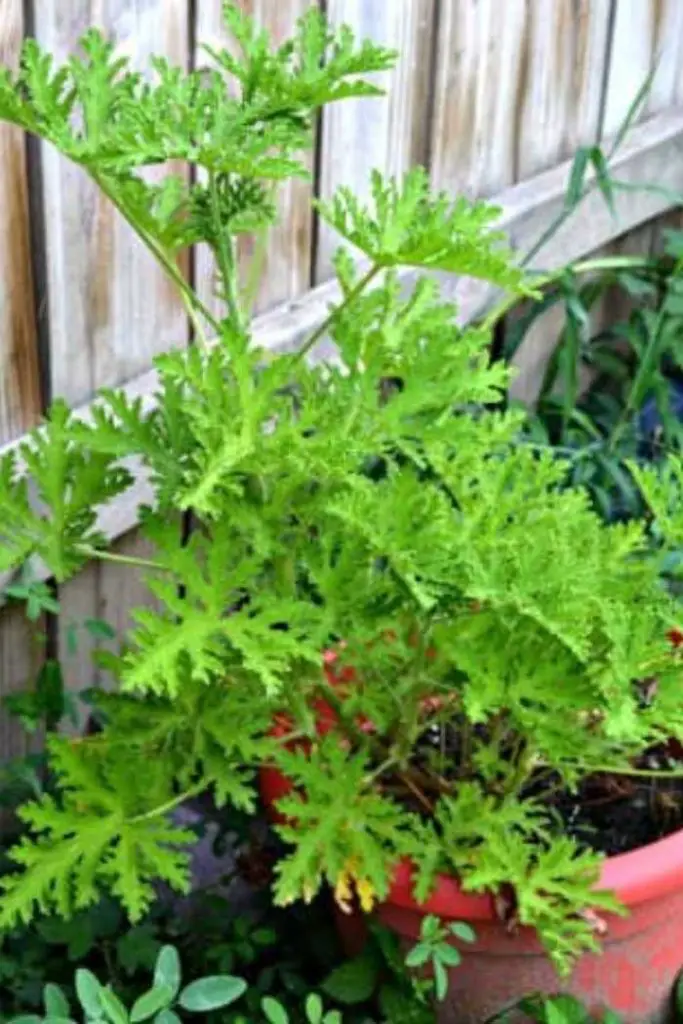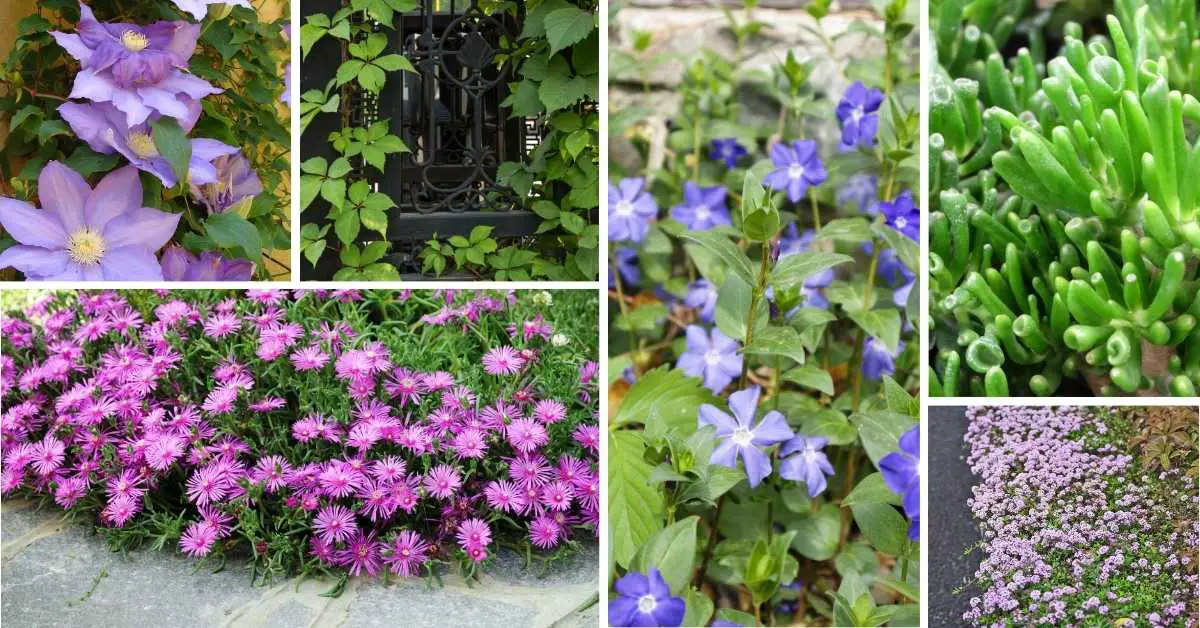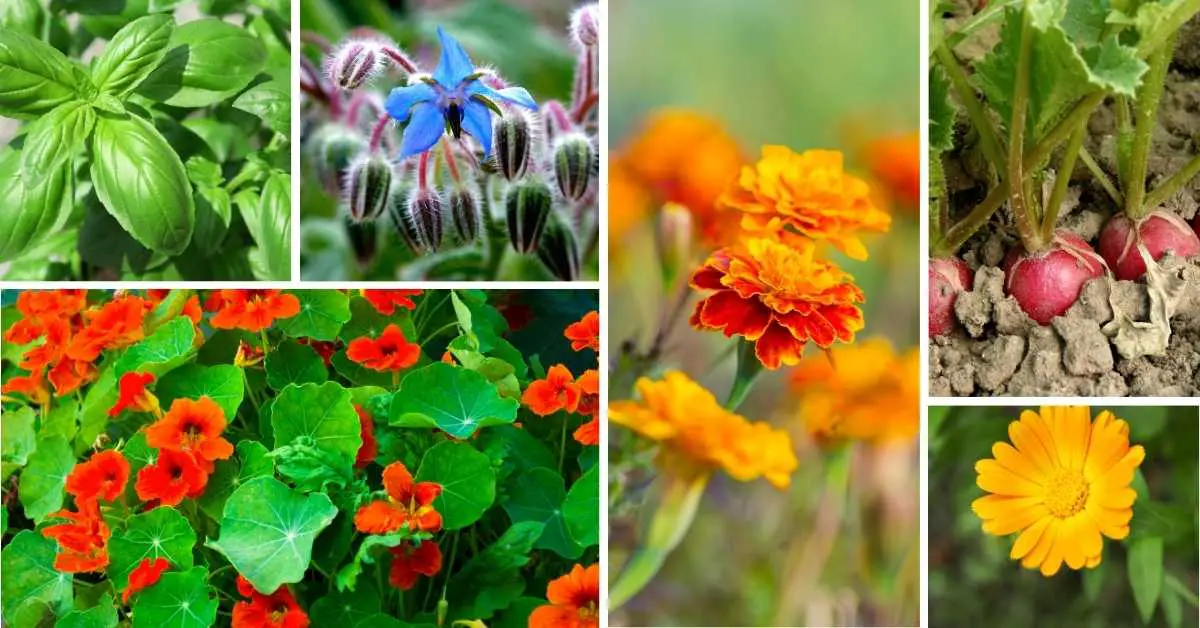As you prepare to grow your citronella plant, you’ll need to make some important decisions to guarantee its success. You’ll want to select the right variety, considering factors like climate tolerance and oil content.
But that’s just the beginning. You’ll also need to provide the perfect environment, from the type of potting mix to the amount of sunlight it receives. And what about watering and fertilization? Get these elements wrong, and your plant may struggle to thrive.
By following the right steps, you can coax your citronella plant into a lush, fragrant oasis – but where do you even start?

Key Takeaways
- Choose a citronella variety suited to your local climate, considering factors like climate tolerance, growth rate, and oil content.
- Plant citronella in a container with good drainage and a well-draining potting mix, with a pH between 6.0 and 7.0.
- Provide citronella with 4-6 hours of bright, indirect sunlight daily and water when the top 1-2 inches of soil are dry.
- Prune citronella regularly to promote bushy growth, and manage pests with natural predators, organic pesticides, and beneficial microorganisms.
- Mulch around the base of the plant to retain moisture, regulate soil temperature, and suppress weeds, using organic materials like bark chips or straw.
Choosing the Right Citronella Variety
When selecting a citronella variety, consider factors like climate tolerance, growth rate, and oil content, as some species, like Citronella winterianus, are better suited for warm temperatures and produce a higher citronella oil yield. You’ll want to choose a variety that thrives in your local climate, ensuring best growth and oil production.
Citronella has a rich history, with ancient civilizations using it for medicinal and culinary purposes. Today, you have numerous varieties to choose from, each with its unique characteristics.
Understanding citronella’s classification is important in making an informed decision. Citronella is a type of grass, belonging to the Cymbopogon genus. There are two main varieties: Cymbopogon nardus and Cymbopogon winterianus. The former is commonly used in perfumes and fragrances, while the latter is preferred for its high citronella oil content.
Consider your specific needs and goals when selecting a variety. Whether you’re looking to create a natural insect repellent or harness its medicinal properties, choosing the right citronella variety is essential for success. By understanding the factors that affect citronella’s growth and oil production, you’ll be well on your way to cultivating a thriving citronella plant.

Planting Citronella in Containers
You’ll need a container with good drainage and a well-draining potting mix to plant citronella, as it’s prone to root rot in waterlogged soil.
When selecting a container, consider a minimum size of 12-14 inches deep and 18-20 inches wide to accommodate the citronella plant’s mature size.
Guarantee your container has drainage holes at the bottom to prevent waterlogging.
You can opt for a pot material like ceramic, plastic, or terra cotta, but avoid using metal containers as they can conduct heat and cause root damage.
Drill a few extra drainage holes in the bottom if your container doesn’t have them, and add a layer of small rocks or broken pottery at the bottom to improve drainage. This will secure that excess water can escape, reducing the risk of root rot.
With a well-designed container, you’ll be well on your way to growing a healthy and thriving citronella plant.

Soil Requirements for Citronella
Citronella plants flourish in well-draining soil with a pH between 6.0 and 7.0, making it vital to select a potting mix specifically designed for tropical plants. You’ll want to guarantee the soil has good acidic tolerance, as citronella can tolerate slightly acidic conditions. A mix with a pH buffer will help maintain a stable environment for your plant.
When choosing a potting mix, look for one that promotes soil aeration. Citronella roots need oxygen to breathe, and a well-aerated mix will prevent waterlogging and root rot. You can also add organic matter like peat moss or perlite to improve drainage and aeration.
Avoid using regular garden soil, as it can compact and prevent proper drainage. Instead, opt for a mix specifically designed for containers, which will retain moisture but drain excess water. By selecting the right potting mix, you’ll provide your citronella plant with a healthy foundation for growth.
Providing Optimal Sunlight Conditions
To cultivate a thriving citronella plant, provide it with bright, indirect sunlight for at least four to six hours a day, ideally in a south-facing window or under grow lights. This will guarantee your plant receives the ideal amount of light without being scorched. Morning sunlight is particularly advantageous, as it’s gentler than afternoon sun and won’t cause leaf scorch.
If you don’t have a south-facing window, consider using grow lights to supplement the natural light. Be cautious not to place your citronella plant in direct sunlight, especially during peak hours, as this can cause damage. East- or west-facing windows are also suitable alternatives if a south-facing window isn’t available.
Watering Citronella Plants Correctly
Proper watering techniques involve checking the soil’s moisture levels daily, as citronella plants prefer a consistent balance of hydration and drainage. You’ll want to water your citronella plant when the top 1-2 inches of soil feel dry to the touch. Overwatering can lead to water logging, which can be detrimental to the plant’s health. It’s crucial to guarantee good drainage holes in the pot to prevent water from accumulating in the soil.
When you do water your citronella plant, make sure to water it thoroughly. Water should flow out of the drainage holes, indicating that the soil is moist but not waterlogged. Check the soil moisture by sticking your finger into the soil up to the first knuckle. If the soil feels dry, it’s time to water.
Avoid getting water on the leaves or crown of the plant to prevent fungal diseases. By following these guidelines, you’ll be able to provide your citronella plant with the right amount of water, promoting healthy growth and preventing common problems associated with improper watering.
Fertilizing for Healthy Growth
As you work to foster a thriving citronella plant, you’ll need to provide it with the necessary nutrients for healthy growth.
Fertilizing is a vital step in this process, and it’s crucial to get it right.
Nutrient-Rich Soil Mix
Your citronella plant requires a nutrient-rich soil mix, comprising a balanced blend of nitrogen, phosphorus, and potassium, to thrive and produce its signature fragrant oils. To achieve this, you’ll want to focus on creating a soil environment that’s conducive to healthy growth.
Start by ensuring your soil has a slightly acidic to neutral pH, between 6.0 and 7.0, as citronella plants prefer this range. Incorporate organic matter like compost or well-rotted manure to improve soil structure and fertility.
Consider brewing compost tea, a nutrient-rich liquid solution, to provide beneficial microbes that’ll aid in nutrient uptake. Proper soil aeration is also essential, so make sure your pot has good drainage holes to prevent waterlogging.
Moreover, foster a thriving soil microbiome by introducing beneficial microbes, which will help break down organic matter and make nutrients more available to your citronella plant. By attending to these details, you’ll be well on your way to creating a nutrient-rich soil mix that’ll support your plant’s growth and fragrance production.
Balanced Fertilizer Ratios
For the best growth and fragrance production, you’ll want to fertilize your citronella plant with a balanced fertilizer that provides the right ratios of nitrogen, phosphorus, and potassium. A balanced fertilizer guarantees your plant receives the necessary nutrients for peak development. Aim for a fertilizer with a ratio of 10-10-10 (nitrogen-phosphorus-potassium) or 20-20-20 for more concentrated delivery.
When selecting fertilizer options, consider organic or synthetic formulas. Organic fertilizers, such as fish emulsion or compost tea, provide a slow and steady nutrient delivery. Synthetic fertilizers, on the other hand, offer a quick release of nutrients. Choose a fertilizer that aligns with your gardening philosophy and citronella plant needs.
Proper nutrient delivery is essential for your citronella plant’s health. Nitrogen promotes leaf growth, phosphorus supports root development, and potassium enhances overall plant vigor. By providing your citronella plant with a balanced fertilizer, you’ll encourage healthy growth, fragrant leaves, and a thriving plant.
Timing Is Everything
You’ll want to fertilize your citronella plant during its active growth phase, typically during spring and summer, when it’s producing new leaves and stems at an incredible rate. This Seasonal Synchronization is important, as it allows your plant to absorb the nutrients it needs to thrive. During this period, your citronella plant is more receptive to fertilization, and you’ll see faster growth and development.
However, it’s important to take Climate Considerations into account, such as temperature and humidity, which can affect fertilizer absorption. In warmer climates, you may need to fertilize more frequently, while in cooler climates, you may need to fertilize less often. Make sure to adjust your fertilization schedule accordingly to make sure your plant receives the right amount of nutrients.
Pruning for Bushy Growth
As you prune your citronella plant, you’ll want to focus on three key areas to promote bushy growth.
First, you’ll need to prune for shape, trimming back wayward stems to maintain a balanced, rounded appearance.
Next, you’ll cut back leggy branches, thin out centers, and make strategic cuts to encourage dense, lush foliage.
Prune for Shape
Pruning your citronella plant regularly encourages bushy growth by promoting the development of lateral shoots and preventing legginess. This is vital in creating a strong Citronella framework, which is necessary for a healthy and thriving plant.
When pruning for shape, you’ll want to focus on maintaining a balanced structure, encouraging your citronella plant to grow outward and upward. To achieve this, you’ll need to prune your plant regularly, removing any weak or spindly growth.
One common mistake to avoid is pruning too much of the plant at once. This can cause stress, leading to disease and pest issues. Instead, prune in small increments, taking care not to remove more than one-quarter of the plant’s foliage at a time.

Cut Back Leggy
To encourage bushy growth and prevent legginess, cut back leggy stems to about one-third of their height, making clean cuts just above a node, from which new shoots will emerge. This pruning technique will help your citronella plant develop a fuller shape and promote healthy growth.
When you cut back leggy stems, you’re encouraging the plant to focus its energy on producing new shoots and leaves, rather than investing in weak, spindly growth. As you prune, be sure to remove any weak or dead stems, as these can drain the plant’s energy and hinder its overall health.
Deadheading stems, or removing spent blooms, can also help redirect the plant’s energy towards producing new growth. Consider taking stem cuttings from the pruned stems to propagate new citronella plants.
By cutting back leggy stems, you’ll be rewarded with a bushy, vibrant plant that’s better equipped to thrive in its environment. Remember to make clean cuts, as ragged cuts can provide an entry point for disease and pests.
With regular pruning, you can enjoy a healthy, thriving citronella plant that provides a welcome fragrance to your outdoor space.
Thin Out Centers
By selectively removing interior stems, you can thin out the center of your citronella plant, allowing air and light to penetrate the dense foliage and promoting a more compact, bushy shape. This pruning technique encourages stem splitting, which in turn stimulates new growth and a fuller plant. As you thin out the center, take note of the leaf arrangement, making sure to maintain a balanced and symmetrical crown formation. This will guarantee your citronella plant grows strong and healthy.
When thinning out the center, be mindful of deadheading benefits. Remove any dead or dying stems to prevent the spread of disease and encourage new growth. By doing so, you’ll foster healthy stem growth and prevent the plant from wasting energy on dying stems.
Additionally, thinning out the center allows for better air circulation, reducing the risk of fungal diseases that thrive in humid environments. By following these pruning techniques, you’ll be rewarded with a lush, bushy citronella plant that’s perfect for hedges, borders, or containers.
Managing Pests and Diseases
How do you protect your citronella plant from the onslaught of pests and diseases that can quickly turn a thriving garden into a disaster zone? As a responsible gardener, it’s crucial to have a thorough management plan in place to prevent infestations and infections.
One effective approach is to introduce natural predators, such as ladybugs or lacewings, to prey on pests like aphids and whiteflies. You can also use organic pesticides, like neem oil or pyrethrin, as a last resort.
Crop rotation is another important strategy to break the life cycle of pests and diseases. By rotating your citronella plants with non-host crops, you can reduce the risk of infestation.
Biological control methods, such as introducing beneficial microorganisms, can also help suppress disease-causing pathogens.
For a holistic approach, consider integrated management, which combines physical, cultural, biological, and chemical controls to maintain a balanced ecosystem.
Propagating Citronella Plants
You’ve successfully protected your citronella plant from pests and diseases, and now it’s time to think about propagation, as citronella plants can be easily multiplied through stem cuttings, division, or layering.
This will allow you to create new citronella clones, which will have the same characteristics as the parent plant. To take stem cuttings, choose healthy stems with at least two nodes, cut them from the parent plant, and remove lower leaves. Dip the cut ends in rooting hormone and plant them in a pot filled with a well-draining mix. Water thoroughly and provide high humidity. Keep the soil consistently moist until roots develop.
You can also propagate citronella through division, where you separate the roots of a mature plant and replant the separated sections. Layering is another method, where you bend a long stem to the ground, secure it with a rock, and wait for roots to develop.
With these methods, you’ll be able to create multiple citronella clones, ensuring a continuous supply of this wonderful herb.
Transplanting Citronella Outdoors
When the weather warms up and the danger of frost has passed, it’s time to transplant your citronella plant outdoors, choosing a location that receives full sun to partial shade and has well-draining soil.
Before moving your citronella plant outdoors, you’ll need to harden it off to prepare it for outdoor conditions. This process, known as citronella hardening, involves gradually exposing your plant to outdoor conditions over the course of 7-10 days. Start by moving your plant to a shaded outdoor location for a few hours a day, then gradually increase the duration and intensity of sunlight. This will help your plant adapt to outdoor conditions and reduce the risk of shock.
Once your citronella plant is fully hardened, you can transplant it to its final outdoor location. During outdoor acclimation, make sure to monitor your plant’s moisture levels and adjust as needed to prevent stress.

Mulching for Moisture Retention
As you prepare your citronella plant for best growth, you’ll want to focus on mulching for moisture retention.
When it comes to mulching, you’ll need to take into account two essential factors: the soil coverage depth and the type of mulch material you’ll use.
Soil Coverage Depth
As you cultivate your citronella plant, it’s vital to get the soil coverage depth just right. For the best growth, citronella plants need a soil coverage depth of around 2-3 inches of organic mulch, which helps retain moisture and regulate soil temperature. This ideal depth ensures the soil structure remains well-aerated, allowing roots to breathe and absorb essential nutrients. When you achieve the correct depth, you’ll notice improved soil moisture retention, reducing the need for frequent watering.
This, in turn, helps maintain a consistent soil temperature, which is crucial for healthy root development.
To achieve depth control, start by applying a layer of organic mulch, such as coconut coir or bark chips, around the base of your citronella plant. Gradually add more mulch as needed, monitoring the soil’s response to make sure the ideal depth is maintained. By doing so, you’ll create an environment that fosters healthy growth, allowing your citronella plant to thrive.
Mulch Material Options
You’ll find that selecting the appropriate mulch material is crucial for effective moisture retention, and options like organic bark chips, straw, or cocoa hulls can help retain up to 30% more moisture in the soil. These organic choices not only preserve water but also regulate soil temperature, suppress weeds, and add aesthetic appeal to your citronella plant’s surroundings.
When choosing a mulch material, consider the color, texture, and durability of the material. Decorative toppings like pine straw or cedar chips can add a pop of color and texture to your garden bed. Organic mulches like coconut coir or wood shavings break down over time, enriching the soil with nutrients.
Whichever material you choose, make sure it’s free of contaminants and weed seeds to prevent unwanted growth. Apply a 2-3 inch layer of mulch around your citronella plant, keeping it a few inches away from the base to prevent rot. By selecting the right mulch material, you’ll create a thriving environment for your citronella plant to flourish.
Protecting From Extreme Weather
During intense storms or heatwaves, citronella plants require extra care to survive, and that’s where your protective measures come in. You’ll want to stay ahead of the game by keeping a close eye on the weather forecast, so you can prepare your citronella plants for extreme weather conditions.
If you live in an area prone to strong winds or heavy rainfall, consider creating a storm shelter for your plants. This can be as simple as moving them to a covered area or creating a DIY shelter using a tarp and some stakes. For frost protection, bring your potted citronella plants indoors or move them to a climate-controlled area to maintain a consistent temperature.
Seasonal care is also important, as citronella plants have different needs depending on the time of year. Create microclimates by grouping plants together or using row covers to regulate temperature and humidity.
Common Mistakes to Avoid
Common Mistakes to Avoid
One common mistake citronella growers make is overwatering, which can lead to root rot and ultimately kill the plant, especially in poorly draining soil or containers without adequate drainage holes. When you overwater, you’re fundamentally drowning your citronella plant, preventing it from getting the oxygen it needs to thrive. This is a critical Citronella Basic to grasp, as it’s a common mistake that can have devastating Overwatering Consequences.
Another mistake is neglecting to prune your citronella plant regularly. Failing to do so can lead to a leggy, weak plant that’s more susceptible to disease and pests. By pruning your citronella regularly, you’ll encourage bushy growth and prevent it from becoming too leggy.
Additionally, you should avoid placing your citronella plant in areas with direct sunlight for extended periods, especially during the hottest part of the day. While citronella plants need some direct sunlight, too much can cause scorching and damage to the leaves.
Frequently Asked Questions
Can Citronella Plants Be Grown Indoors Year-Round?
You can successfully grow citronella indoors year-round by providing ideal light conditions, typically 4-6 hours of direct sunlight or 12-14 hours of indirect light, and maintaining a consistent temperature between 65-75°F (18-24°C) for healthy growth.
How Often Should Citronella Plants Be Repotted?
You should repot your citronella plant every 1-2 years to prevent root bound conditions and soil fatigue factors, ensuring healthy growth and maximizing its natural pest-repelling properties.
Are Citronella Plants Safe for Pets to Be Around?
When bringing citronella plants into your home, make sure you’re aware that they can trigger pet allergies and contain toxic compounds, so keep them out of reach to maintain a safe environment for your furry friends.
Can Citronella Oil Be Extracted From Homegrown Plants?
You can extract citronella oil from homegrown plants through steam distillation, preserving the essential properties of the plant’s natural oils, but be prepared for a complex process requiring specialized equipment and expertise.
Do Citronella Plants Attract Beneficial Insects?
As you cultivate your citronella plant, you’ll attract pollinator friends like bees and butterflies, which are essential for a healthy ecosystem. These beneficial insects also serve as a natural pest control, keeping unwanted bugs at bay.
Conclusion
You’ve successfully grown a thriving citronella plant by choosing the right variety, planting in well-draining containers, providing ideal sunlight, and watering correctly.
Don’t forget to transplant outdoors, mulch for moisture retention, and protect from extreme weather.
By following these steps and avoiding common mistakes, you’ll enjoy a healthy, fragrant citronella plant that rewards you with its natural insect-repelling properties.





